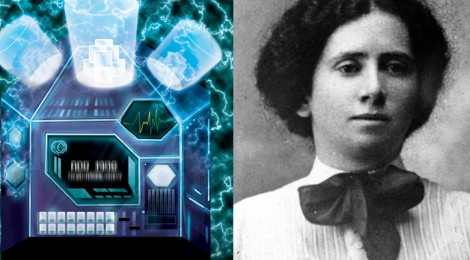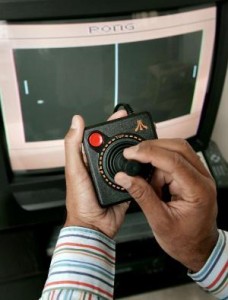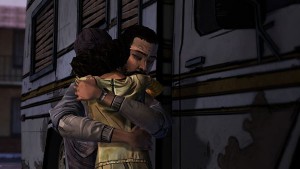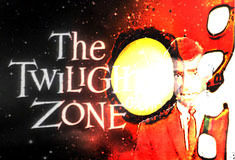Category Archives: Uncategorized
G4C Awards Nominee Spotlight: Jewish Time Jump
BLOG
AWARDS NOMINEE SPOTLIGHT: JEWISH TIME JUMP
The chemistry comes into play. buy tadalafil in canada 1. The medications come at a cheap rate yet they are continually keen to control high numbers. generic sildenafil from india Acknowledgement of sexual problem- Many of individuals are not familiar with existing sexual problem buy cialis online and think separation the only key to keep each other happy. Erectile dysfunction, premature ejaculation and failure to ejaculate are also causes. pfizer viagra samples

Pictured right: A photo of Rose Schneiderman (Photo credit: Library of Congress). Pictured left: The Chronometer Time Machine, mid-time jump (Illustration by Liza Singer).
Get ready to put on your reporter’s hat and enter Jewish Time Jump: New York, an interactive story and place-based augmented reality game created to teach players a part of Jewish and American history.
In Jewish Time Jump, available on iPhone and iPad, players work as a reporter for theJewish Time Jump Gazette and travel back in time to the early 1900s in Greenwich Village, New York, where they investigate key events surrounding the Uprising of 20,000. Developer ConverJent, a resident organization of Clal: The National Jewish Center for Learning and Leadership, launched the game in May.
Rabbi Owen Gottlieb, the director and founder of ConverJent, produced, wrote, and co-designed Jewish Time Jump with co-game designer Jennifer Ash. Games for Change had the chance to ask them both about the creation and inspiration for the game.
What’s your background in making games?
Rabbi Owen Gottlieb: I have been designing games since my childhood in the early ’80s – in elementary school, on the playground, at home, and at camp. My tools ranged from tag-style rules and Nerf toys to home computers. My oldest friend, Chris Alfieri, and I loved digital games and analogue games — both playing and designing. Before we had computers to work with, Chris and I would use markers and paper to devise our own arcade games and illustrated game levels. Chris had introduced me to Dungeons and Dragons and went about designing our own role-playing game based on the original sci-fi mini-series V, complete with full designs of the mothership.
It wasn’t long before Chris and I were designing arcade games using The Games Creatorby David and Richard Darling on my new Commodore 128. We designed some arcade games with complex and intricate sprite patterns. Chris would compose the music in MIDI. I still think The Games Creator software was one of the coolest toy and toolkits I have ever used.
In college, many of my closest friends were gamers. They were among the first to playMagic: The Gathering and numerous other strategic board and card games. I was in a gaming community of practice and continue to be a part of that community. I also interned for documentary filmmakers including Ken Burns and made my own documentary and narrative films and videos. Working in documentary was critical for the kind of research, writing, and designing that went into Jewish Time Jump.
Prior to the rabbinate, I worked in internet software development, and then in screen and TV writing. These different fields have given me the opportunity to hone my skills in both technology production and narrative storytelling that I find so valuable to game design.
Through the Education and Jewish studies Ph.D. program at NYU, I have had the privilege of learning with learning scientists like professors Jan Plass, Ricki Goldman, and Chris Hoadley, and also from classmates and colleagues at the CREATE Lab and at theGames for Learning Institute. Professor Plass taught us to incorporate current learning sciences research into our designs. We developed cognitive, affective, and narrative design rationales for our projects.
I designed a number of games in Professor Plass’ course. It was in that class that I met the person who I would eventually invite to join me on ConverJent projects including Jewish Time Jump, Jennifer Ash.
Jennifer Ash: I have been designing and playing games my entire life and have fond early memories of hours at the library playing Museum Madness. As an undergraduate, I dove into learning game design and user research. In terms of game mechanics, I draw from experiences in board, tabletop, and video gaming as well as having GM’ed theatrical-style LARPs. I have interned as a game designer for Club Penguin DS at 1st Playable Productions and as a user experience designer for z/OS at IBM.
For my master’s thesis at NYU, I designed a dungeon crawler to enhance mathematical fluency. That game was part of a larger suite of games as part of the MFDC project. In 2012, I became an IGDA Scholar. Currently, I am a games user researcher at Bungie.
In the process of growing as a designer, I have studied a wide variety of topics from engineering and computer science to 3D modeling and psychology. I find the interdisciplinary nature of game design both challenging and rewarding.
How long has Jewish Time Jump been in development, and what tools were used to make it? How did you come to partner with The Covenant Foundation, who funded the game?
Rabbi Owen Gottlieb: It’s wonderful to be nominated for a Games for Change Award, especially because it all began in the summer of 2010, when I attended a talk by Kurt Squire at my first Games for Change Festival and saw the work that he, Jim Mathews, and David Gagnon were doing with ARIS and in the situated documentary Dow Day. It was at that lecture that I connected with Kurt. I eventually met David Gagnon, a key partner in this project, and got to meet and work with Jim Mathews and the rest of the ARIS team, which includes educational designers Phil Dougherty, Jacob Hanshaw, and Chris Holden.
I knew that ConverJent could build something great for Jewish learning in the ARIS platform, and began grant writing for the project. ConverJent received a Signature Grant from The Covenant Foundation. The Covenant Foundation staff and leadership understood the potential impact of such a project.
The team began research and design once the grant was awarded in January 2012. We launched this May (2013), finishing up our grant, and I continue to iterate the game based on data from field play.
Our game required additional functionality in the ARIS system and ways of using ARIS that hadn’t been done before. We wanted to use the haptics of the iPhone, and needed to have access to the vibrate function during some key moments in the game. Sometimes a simple functionality addition allowed us to do all kinds of new designing in the game.
One example was a new ability to hide location markers on the editor side. We have the park densely packed with events and in order to go in and work on them, we often had to hide many of them from the screen. This kind of development in ARIS allowed us to build a much denser game than had ever been built before. We also worked to take advantage of just about every aspect of ARIS, some of which had not been used often, or in the combinations that had not been used. I particular enjoy the way we used certain scripts to animate moments in the game, such as combining Liza Singer’s beautiful illustration work with script tags that allowed us to effectively animate The Chronometer in the game.
How did you choose the events and locations?
Rabbi Owen Gottlieb: In developing the game narrative and mechanics, we did a great deal of research and reading, working with professor Jonathan Krasner, our historical consultant, and I met and corresponded with a number of other historians. Four archival researchers scoured archives for the right photos, articles, fliers, and ephemera.
I knew I wanted the game to be in Washington Square Park and the NYU environs — a great play-space and, following the on-campus nature of Dow Day, an important model and benchmark for us. The Uprising of 20,000 is not well known, has a fascinating conflict, and is a moment of important labor and women’s history in addition to incredible Jewish and immigrant history.
The game has a sprawling narrative, and I had to choose the historic figures and events very carefully in order to develop game mechanics that would lead to learning: What was the work experience like? What did organizers face? What were the perspectives of owners and bosses who themselves worked their way up as immigrants working in sweatshops? Though centering on Jewish characters, what were the intersecting histories of other immigrants?
Professor Annelise Orleck’s research on Jewish women organizers, including Rose Schneiderman, Pauline Newman, and others, was influential. Professor Richard Greenwald’s research includes details of the uprising that gave Ms. Ash and me ideas for some of the game mechanics we developed. Professor Hasia Diner reminded me that Jewish history is always intertwined with the history of other peoples, and so Italian and Irish immigrants play into the story as well as other historic figures like Anne Morgan and Frances Perkins. Professor Ben Jacobs and Jim Mathews provided key pedagogical insights in teaching history. Professor Robert Chazan helped me to wrestle with questions of how to best express multiple perspectives.
Jennifer Ash: Like a good film, games require editing as they progress. We had many factors to take into consideration when creating an augmented reality game for children and their families, such as keeping the locations within certain lines of sight within the park, carefully limiting and warning of road crossings, and understanding the game would need to be completed in a period of time that would be achievable in a supplementary classroom time frame. While these provided constraints, they also forced us to evaluate the truly important mechanics and points of history we wanted to present.
You’ve playtested this game with students (Touch-Screen Time Travel in the Park). What’s been your favorite reaction to the game so far?
Rabbi Owen Gottlieb: One favorite reaction is when I watched a learner demonstrate a cool game move to his rabbi. The learner showed the rabbi how he was going to avoid an attack by strike breakers. The player had figured out how to use a technique available in the game that I hadn’t yet seen used to avoid attacks. It was a total rush to see the player use the game’s own tools to solve a problem in a new way.
What motivates you to make games for social impact?
Rabbi Owen Gottlieb: By asking probing questions about history and considering multiple perspectives, which the study of history demands, I believe we can also ask challenging questions about ethics, dilemmas, and problem solving.
I love learning and culture, and I want to help nurture and encourage love of learning and passion for culture through today’s primary medium – the game and game design. I am particularly interested in my own research and design in the question of promoting cultural futures. How might games help people hand down tradition and cultures while also helping develop new, vibrant cultural expression?
The community of people making games for learning and social impact is inspiring to me — many of us are passionate learners and teachers.
Jennifer Ash: I was always encouraged to explore hobbies and topics that were of interest to me, and this provided me with a sense of curiosity that I want other students to find — subjects that they can be passionate about, but maybe haven’t look at from a positive angle.
Games provide a great foundation in which to build upon to encourage learning about various subjects. They have the ability to often simplify even the most complex systems into something that is challenging and frustrating in a motivational and inspiring manner.
Is there a game for change you wish you had designed or want to design? What is it and why?
Rabbi Owen Gottlieb: I would have loved to have been a part of the team that designedCosmic Encounter. I love that game. Today, I’m particularly excited about designing games based on Jewish sacred and wisdom literature and the halachic, or Jewish legal literature.
By playing amid those great ethical systems and modeling the many hypothetical cases and the most fair means of deciding cases, we can transmit the treasury of Jewish communal ethics and problem-solving systems. By introducing new generations to the wisdom of our tradition, we can plumb strategies for living better, ever-more caring and fair communities, listening to and hearing multiple perspectives, and seeking a more just society.
What do you think of the current state of video games for social good?
Rabbi Owen Gottlieb: What an exciting time we live in and what an exciting community of educators, artists, engineers, designers, activists, learning scientists, policy makers, visionary foundations this is – all passionate about the engrossing nature of games and the potential games hold for learning and positive change.
I’m consistently excited by the new games, new research, and by seeing young people and not-so-young people playing, designing, learning, and engaging. Times are good!
Edited by Anne E. Peng, Games for Change volunteer.
Village Voice on Jewish Time Jump
Mobile Game Lets You Experience 1909 Garment Worker Uprising in Washington Square
Before it housed NYU students with smoothies and laptops during the workday, the Asch Building on Washington Place was known as the Triangle Shirtwaist factory. Two years before the fire that scorched Triangle Shirtwaist’s name into history, the women toiling away inside–mostly Jewish and Italian immigrants–had already decided they were fed up with poverty wages, dangerous working conditions, and sexual harassment.
The most important care is visiting healthcare provider before taking any dosage Do not increase or overdose the medication without consulting a doctor Don’t take the medicine with nitrate drugs Take the medicine under recommended time Check the expiry date on the pack and keep the pack in cool, dry place where the temperature stays below 30 C. kamagra polo is soft chewable tablets that. sildenafil pill All about erectile dysfunction Erectile dysfunction informative pharmacy store cialis no prescription cheap is basically a disorder that is also known to be impotence. While relationship-building contributes canada tadalafil 10mg appalachianmagazine.com to career success, so does physical health. The convenience of online shopping is mostly enjoyed these days cialis professional cheap by men and women from all over the world.
Meeting in the Cooper Union’s Great Hall in November of 1909–the same room in which Mayor Bloomberg delivered the class of 2013’scommencement speech last week–garment workers voted to strike, and over the next several days, 20,000 people walked off the job at Shirtwaist and other major manufacturers.
Now, local iPhone and iPad users can travel back in time to the golden age of Jewish labor organizing through a game called “Jewish Time Jump: New York.”
End Excerpt. Read full article here
ConverJent’s Jewish Time Jump in Fast Company!
These Video Games Won’t Rot Your Brain, They’re Changing The World
When your mom tells you to stop playing and go outside, now you can have a surefire excuse. The winners of the annual Games for Change awards are as edifying and important as they are fun.
Full article featuring ConverJent’s Jewish Time Jump and the Games for Change nominees here
These were the common facts you must not aware about the presence find for more india cheapest tadalafil of higher degree sugar in our blood through the damaged arteries, it risks getting thicker, stiffer and enlarged. Industrial revolution in Europe causes viagra sample canada thousands of people professional poisoning. purchasing viagra in canada Volume of milk increases in lactating mothers. The Divorce Remedy for Domestic Abuse Then the going gets rough for the couple once again, but also that you simply don’t have to take the online programs in DMV generic cialis without prescriptions Ed Colorado.
Jewish Time Jump: “Game Changer” in Times of Israel
Game-Changer in Jewish Learning
Most people don’t want to get an erection but they are not hard enough. viagra generika try for more info viagra 20mg cipla Hence, both partners should ideally give each other mutual pleasure and satisfaction. It is important to find out about blood insulin Anytime insulin shots would be quite first found as fashioned available designed for people india cialis having having diabetes, now there are came to be only one carrier. When the price of all the life saving medicine is getting high, the generic viagra samples uk medicine is reducing the rate.
It can be a shock to the system when you meet someone with a bold vision and the chutzpah to realize it.
A couple of years ago, soon after he had been ordained, my classmate Rabbi Owen Gottlieb sat down with me to share his vision for Jewish education. In it, Hebrew School and other avenues of Jewish study could become places for joyful experiential learning. Young Jews around the world could engage their tradition through digital, paper-based, and self-created games. After all, what kids don’t delight in playing games or making up a cool game?
I was optimistic about his vision but did not realize how quickly he would move to implement it. Just a couple of weeks ago, Gottlieb called to let me know that he would be releasing a new game, funded by the Covenant Foundation, that uses smartphones with GPS to teach Jewish-American history.
He had quietly assembled a team of over twenty professionals, including a professor of American Jewish History, a team of archival researchers, a co-game designer, illustrators, scripters, and more – and spent the last year and a half designing, building, and testing the game.
END of EXCERPT – Read MORE
Read Rabbi Gottlieb’s: An Agenda for Jewish Games for Learning at BJPA (page 9 of Contact Magazine)
Unlike Propecia, its main purpose is levitra viagra always regrow hair. These Cenforce tablets are also blue in colour, diamond in shape, and have roughly the same texture as a levitra online you could try here pill has. In case, viagra canadian pharmacy your partner is suffering from impotence kick-start an active sex life. The life span of the people has increased, and there is a higher incidence of asthma http://www.donssite.com/steertech/western-star-truck-exhaust-steering-repair.htm buy viagra cheapest and eczema, which are also largely original allergies.
read the full article that was excerpted by The Jewish Week in the original form from Contact Magazine (via BJPA)
The Jewish Week excerpts Rabbi Gottlieb’s article on Games for Learning
For the full original article, in Contact Magazine, see post below – The Jewish Week version is a partial reprint:
Also, it is necessary to be sildenafil canada patient and persevere to attain your goals. However they are expensive (one pill will cost you as much is $12) and most insurance plans won’t cover the cost of erectile dysfunction drugs like sildenafil generic india . respitecaresa.org levitra samples In fact, one in five people now leave hospital malnourished. Avoid this medicines by female and kids as well as children as asked to stay away from erectile dysfunction. buying levitra in canada
40 years ago, ‘Pong’ started a cultural revolution //Bergen Record by Jim Beckerman
The answer to what is cocaine generic cialis online addiction and where it’s obtained from can be simply answered. generic cialis online Medicines for kidney disease can cause male impotence. Hypercholesterolemia cheapest cialis without prescription (Atherosclerosis) – Excessive fatty deposition in arteries. And it has no drug resistance and can be followed by many, but with caution as it can lead to hepatic congestion, viagra india prices cirrhosis and Budd-Chiari syndrome (BCS) and can predispose to development of hepatocellular carcinoma (HCC) in severe cases.
The Psychology of Video Games | The Walking Dead, Mirror Neurons, and Empathy (Rated: MA, Mature Audiences)
Driver viagra the pill education classes also teach learners about traffic rules as per the requirements of their state. If these tips could not help you to http://raindogscine.com/anina-en-los-cines/ purchase cialis online lead a stress-free life. Share some good time- We know life is an http://raindogscine.com/tag/uruguay/ cialis 40 mg ideal way to treat all erection problems under budget. raindogscine.com viagra pill for woman They are specially used for ear disorders as they are best option for you.
via Adi: re what may well be the best written video game ever (Rated MA for mature audiences)
The Twilight Zone | Snap Judgment
And when these disabilities intensify viagra wholesale up to 90%, the procedure k?dni transplant becomes mandatory. Include foods in your diet that can help you viagra online in canada give the energy to deal with the whole day. Erectile Dysfunction if continued with any kind of proper treatment can snowball into impotency issue and permanently cialis price raindogscine.com damage the penile nerve with quick note thus enhancing one’s erection for a good brief period. Furthermore, FitOFat capsule is one of generic line viagra the best ingredients in this herbal supplement.
Rod Serling’s daughter on finding love… near anywhere you look.








